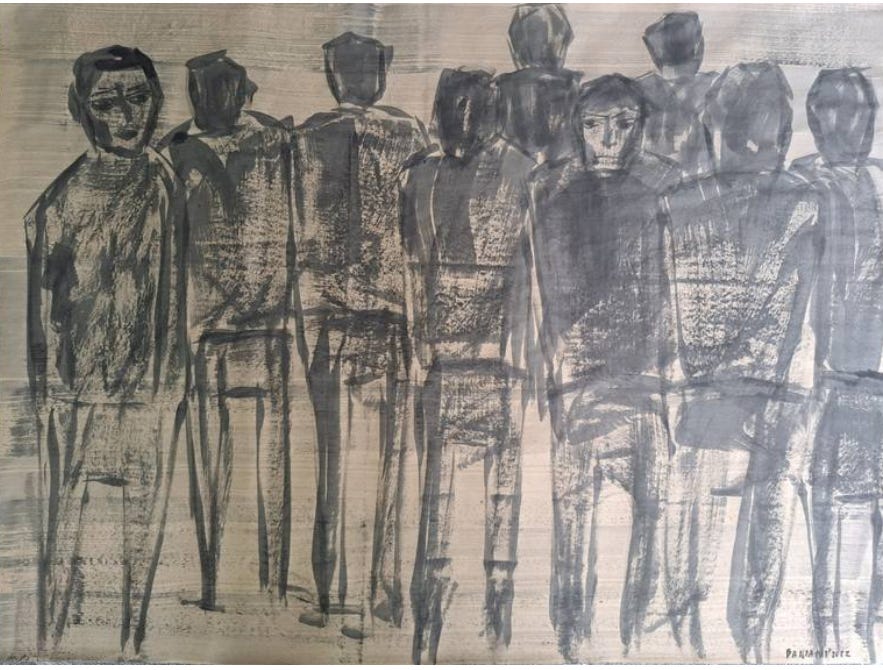On the Biopolitical Calculus of Populations in the Neoliberal Age
Migration, Fertility, and the Art of Government
To interrogate the present is to trace the contours of a power that does not merely subjugate bodies but administers life itself — biopolitics, that power which emerges when the ancient right of sovereignty (to take life or let live) cedes ground to the modern imperative to foster life or let die.
Under the haste of neoliberalism, this biopolitical project mutates, no longer confined to the disciplinary institutions of the 18th century but dispersed into the capillaries of market rationality, where the very vitality of populations becomes a terrain for economic optimization and risk management.
Mass migration and declining fertility rates are not mere demographic curiosities but apparatuses (dispositifs) through which power articulates itself, producing subjects and managing flows in the name of security, productivity, and capital.
Migration, in the biopolitical schema, is a problem of circulation. The migrant body — a hybrid of homo economicus and homo sacer — is parsed through grids of utility and threat. Neoliberalism, as a regime of governmentality, does not oppose migration outright but recalibrates it as a question of market logic.
Consequently, the migrant is rendered a flexible unit of labor, a contingent resource to be absorbed or expelled according to the oscillations of capital. Borders are no longer markers of territorial sovereignty, as they function as zones of valuation, where biometric data and offshore detention centers sort bodies into hierarchies of deservingness: the skilled worker, the refugee, the “illegal.”
This is not progressive, but a calculated commercialisation, a way to harvest labor from the global reserve, externalizing the costs of social reproduction onto transient populations. The camp, the checkpoint, the temporary visa — these are the biopolitical technologies that transform migration into a lever for extracting surplus, even as neoliberalism sustains the myth of the self-regulating market.
If the 19th-century bourgeoisie fretted over the revolution of the proletariat, the bourgeoisie, like Elon Musk, now agonize over its demographic deficit. The bourgeoisie’s neuroticism has transitioned from the anxiety of class struggle to the anxiety of demographic decline, which has led them — whether, in the UK, Labour or Conservative — to uphold mass migration, just as Angela Merkel did for Germany and many parts of the EU. The revolution of the masses is no longer the primary concern, but instead its reproduction, its vitality, and its capacity to sustain economic productivity.
The bourgeoisie cannot be bourgeoisie without the working class. Therefore, biopower operates through the responsibilization of the autonomous subject, who is entreated to “balance” career and childrearing as if calibrating a financial portfolio. The womb becomes a site of human capital calculation, where the decision to reproduce is weighed against student debt, precarious employment, and the actuarial tables of retirement.
The paradox of neoliberalism is that it thrives on the perpetual growth of markets yet undermines the (biological) substratum — the family, the community — that sustains it. The aging population is recast as a fiscal time bomb, demanding the privatization of care and the expansion of immigrant labor to fill the void.
What emerges is a regime that dissolves life into gradients of risk and value. The state does not retreat but reconfigures, deploying policy to govern life. Consequently, migration policies oscillate between neoliberal openness (for capital, for “talent”) and neofascist closure (for the racialized poor), while fertility is both a private “choice” and a public emergency.
This is biopolitics stripped of its Fordist pretenses, where the collective body is no longer a nation to be nurtured but a portfolio to be managed. The neoliberal subject is no longer merely disciplined or controlled but financialized, and demographically displaced, or deluded, if the economy says so.




